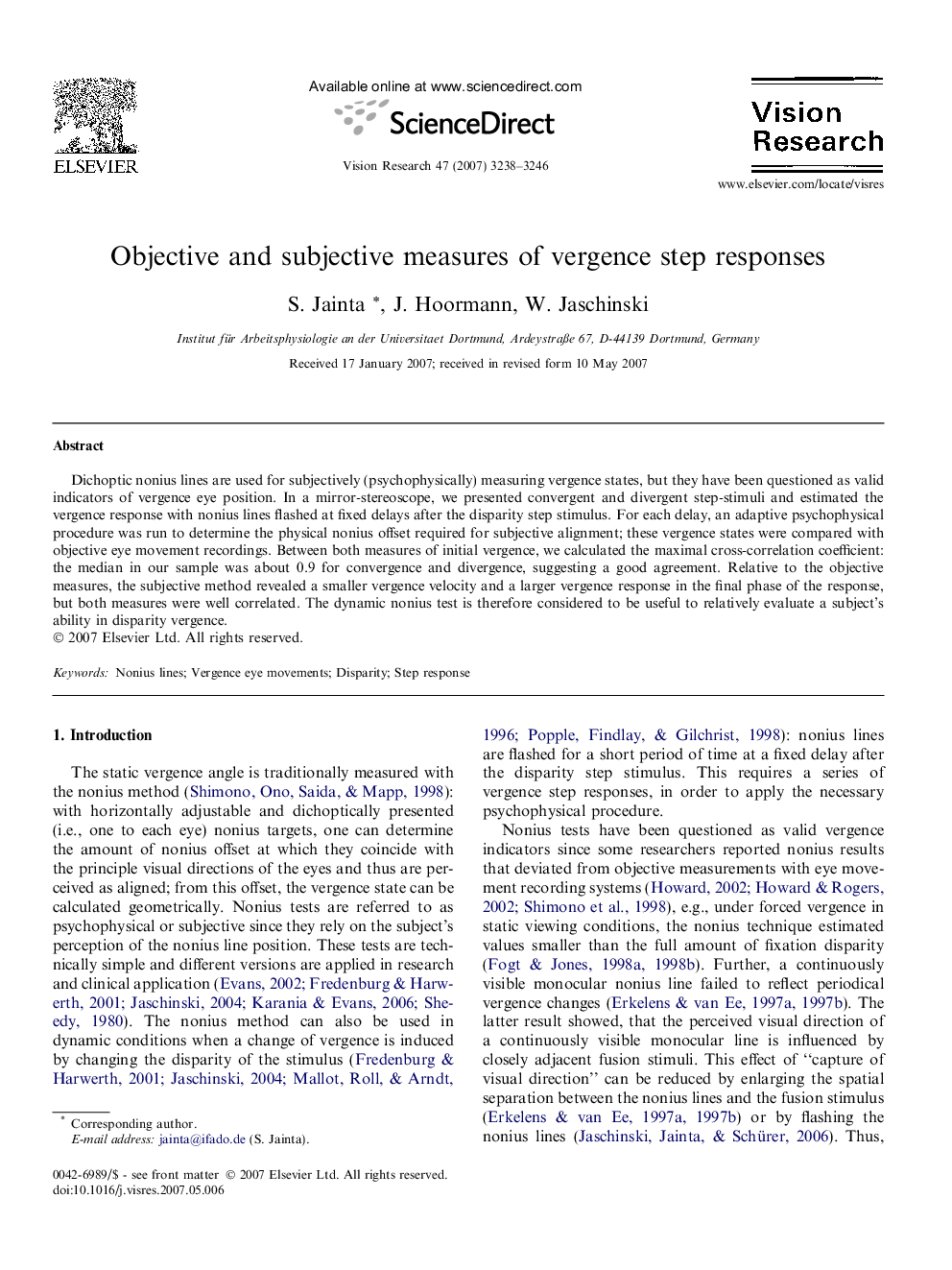| Article ID | Journal | Published Year | Pages | File Type |
|---|---|---|---|---|
| 6203948 | Vision Research | 2007 | 9 Pages |
Dichoptic nonius lines are used for subjectively (psychophysically) measuring vergence states, but they have been questioned as valid indicators of vergence eye position. In a mirror-stereoscope, we presented convergent and divergent step-stimuli and estimated the vergence response with nonius lines flashed at fixed delays after the disparity step stimulus. For each delay, an adaptive psychophysical procedure was run to determine the physical nonius offset required for subjective alignment; these vergence states were compared with objective eye movement recordings. Between both measures of initial vergence, we calculated the maximal cross-correlation coefficient: the median in our sample was about 0.9 for convergence and divergence, suggesting a good agreement. Relative to the objective measures, the subjective method revealed a smaller vergence velocity and a larger vergence response in the final phase of the response, but both measures were well correlated. The dynamic nonius test is therefore considered to be useful to relatively evaluate a subject's ability in disparity vergence.
